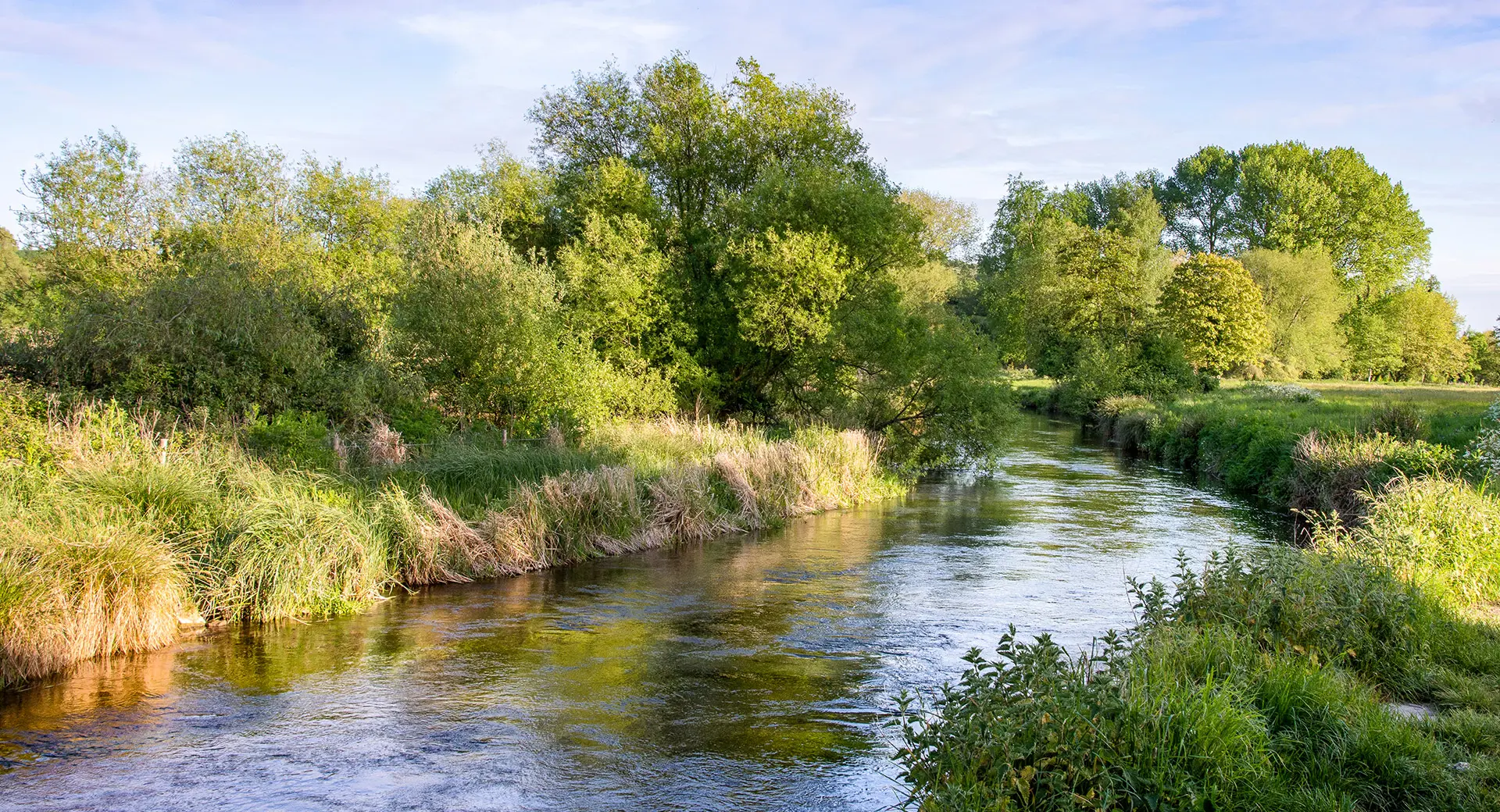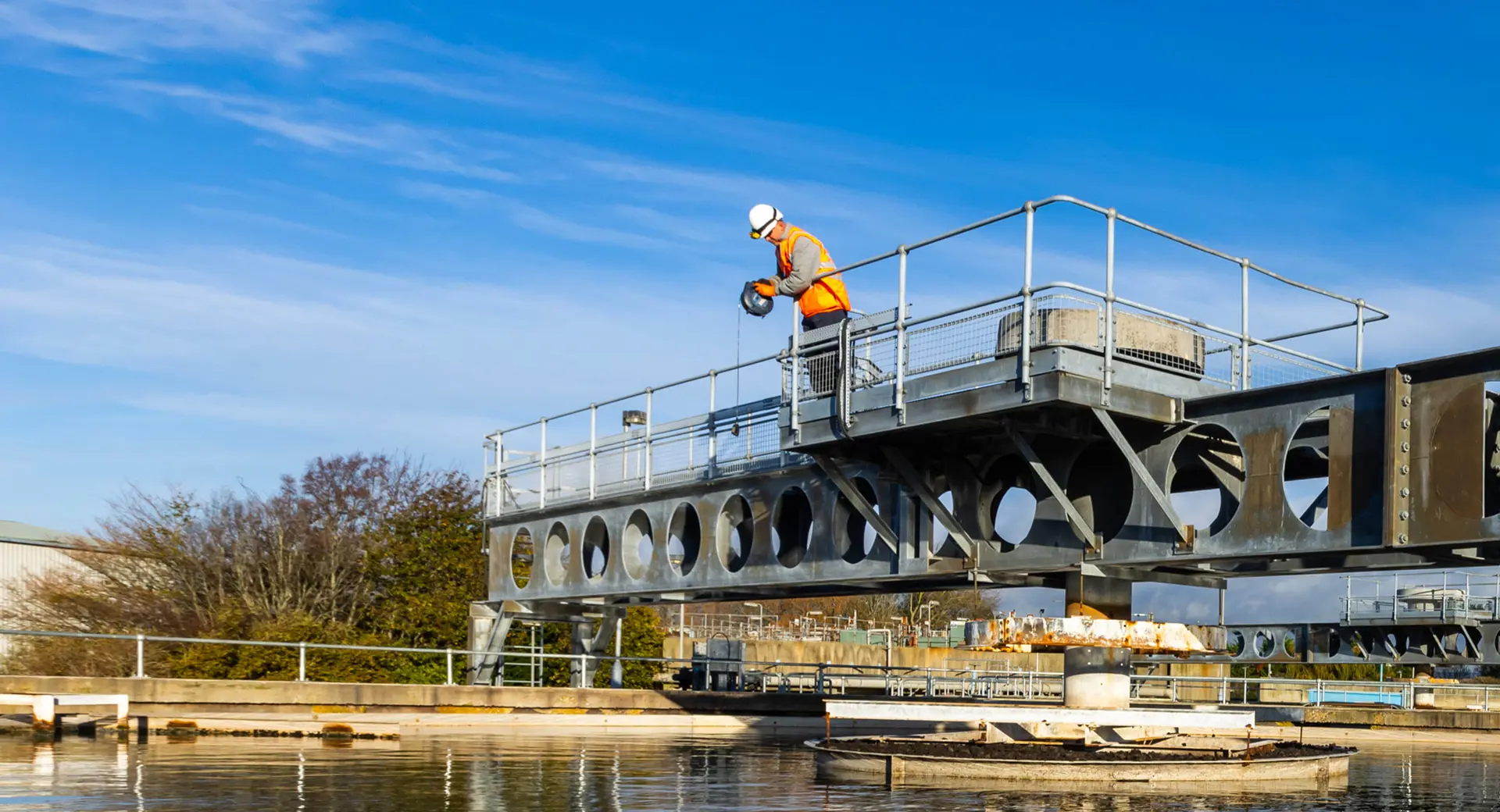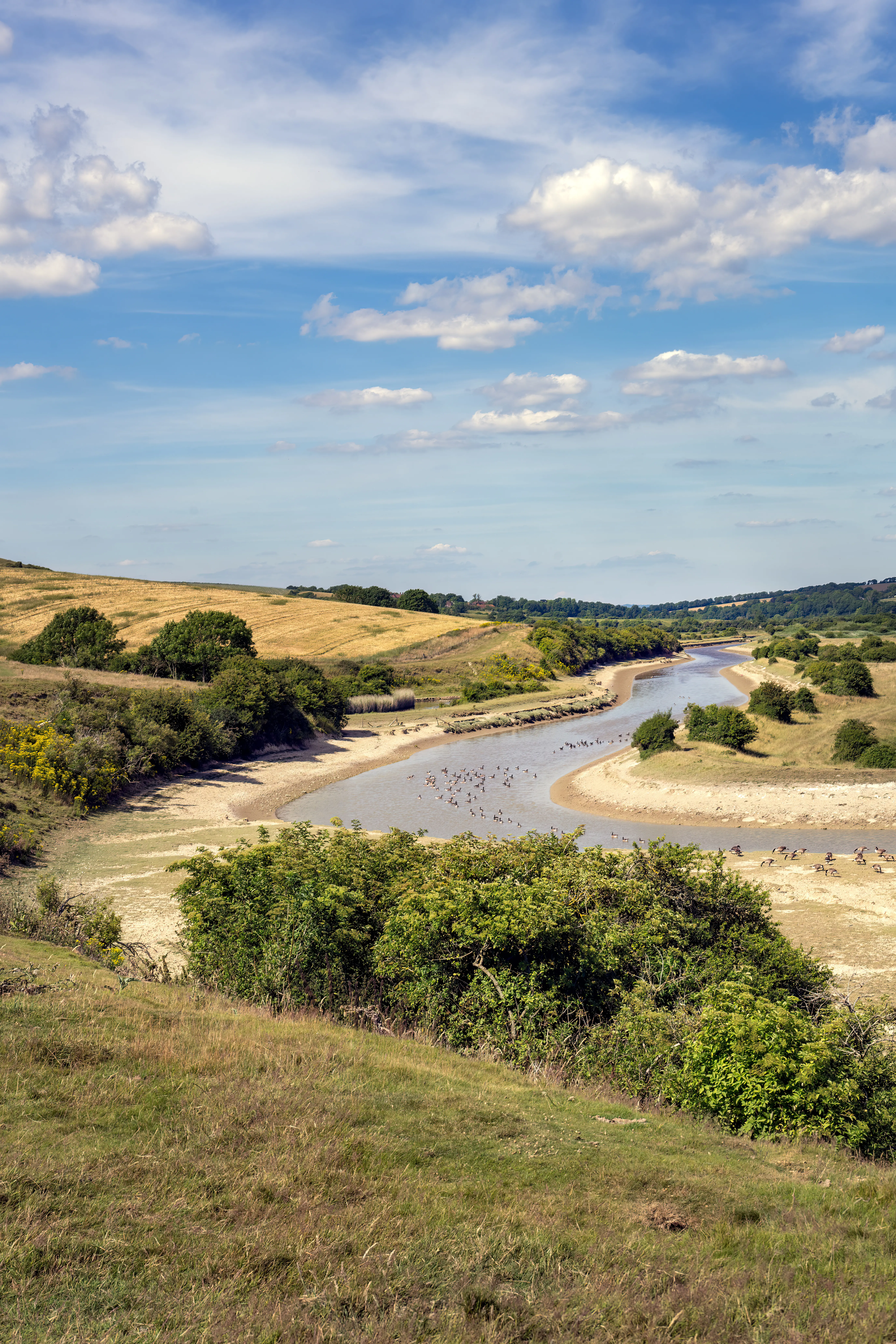Our plans
Our plans include taking more water from the planned Havant Thicket Reservoir to be treated at our Otterbourne Water Supply Works. We also propose to use water recycling technology to supplement the reservoir, so more water is available for supply. This option, which is being developed with Portsmouth Water (in respect of Havant Thicket Reservoir), will require the construction of a water recycling plant and associated pipelines to and from the reservoir. As the proposals are not part of the current agreed plans for Havant Thicket Reservoir, additional engagement, consultation and planning consents will be required.
Our proposed pipeline route for our proposed water resource option
Our proposed pipeline route has been identified following engagement with local planning authorities and environmental experts, on-site walk over surveys and a public consultation in 2022. This proposed route will be subject to further public consultation in 2024 before a planning application is considered.
To help us with the design development of the proposed pipeline route and identify locations for above-ground infrastructure along the route, we need to continue to speak to people. Further surveys to fully understand the environmental and engineering constraints will also need to be carried out. The surveys will involve detailed environmental and engineering ground investigations. The information we collect will be used to identify the proposed locations for above-ground infrastructure and help inform our Environmental Impact Assessment.
Access for the surveys will be by public right of way or with prior agreement from relevant landowners, with information recorded on what is observed. Our preference is to seek agreement from landowners for access. However, we also have statutory powers to access land if entry is refused and is still absolutely necessary.
Geotechnical investigations – looking at what materials are below the surface
Since May 2022, we have been carrying out surveys to inspect the physical and geological characteristics of the ground below the surface along the pipeline corridor and at the proposed water recycling plant site. These surveys are being used to determine the depth and characteristics of individual layers below the surface, including locations of buried services and/or environmental impacts.
The tools used to collect subsurface information consist of ground penetrating radar – a tool often used by archaeologists to detect and map subsurface features without the need for excavation.
Some more intrusive ground investigations – such as temporary boreholes – have also been required. Using a specialist machine, a long narrow tube is inserted into the ground to create a ‘core’ that allows us to look at and record the different subsurface layers and groundwater as well as gas levels. Most core samples will take up to one day to complete, but some may take longer where further monitoring is required. These will be filled in once we’ve completed the survey.
Environmental investigations
Since March 2022, we have been carrying out surveys along the pipeline corridor and proposed water recycling site to investigate sensitive habitat areas. These include a wide range of ecological surveys, including those for birds, bats, badgers, dormice and great crested newts. Our findings are being recorded and further surveys arranged, where required, which may include the need to install equipment such as reptile mats and dormice tubes.
Walkover surveys are being carried out to record habitat features such as woodland, significant trees and hedges, reed beds, winter sown crops and structures such as towers and pylons.
Other environmental surveys are also being carried out to help inform the design of the pipeline, above-ground sites and the water recycling site. These surveys include water feature surveys, landscape and noise, traffic and arboriculture surveys.
Access and keeping you safe
We anticipate access to properties and driveways will not be affected and will be maintained wherever possible. Working areas will be fenced off and we ask you to take care around our sites and follow signage for any footpath diversions.
While we don’t envisage needing to enter any properties to complete this work and will wherever possible avoid the need to do so, all our employees and those working on our behalf carry an identity card with their photograph and name on it. If you’re not sure if a caller works for Southern Water, please phone us to check on 0330 303 0368.
We’re sorry for any inconvenience these surveys may cause, and we thank you in advance for your patience and understanding while this essential work is under way.
Frequently Asked Questions
Water for Life – Hampshire is a central component of Southern Water’s answer to the twin pressures of climate change and a growing population. It will protect the county’s sensitive chalk stream habitats while ensuring there’s sufficient water for public supply – especially during a drought.
The programme will transform the way we source, treat and supply water across the county, which is home to some of the world’s rarest water habitats.
Some 85% of the world’s chalk streams (rivers fed by underground chalk aquifers) are in the UK – and two of the finest examples are found in Hampshire. These rivers, along with their underground aquifers also supply water to more than 750,000 people across the county.
Water for Life – Hampshire will ensure we can continue to balance the needs of local people with those of wildlife and the environment in the face of climate change and a growing population, enabling us to keep Hampshire’s taps and rivers flowing – especially during a drought.
We’ve been developing several potential options to achieve these vital twin aims, alongside investment to reduce leakage and improve water efficiency.
We’re working closely with Portsmouth Water to develop a plan that maximises the benefit of the water available in the planned Havant Thicket Reservoir which recently received planning permission.
The reservoir is being funded by Southern Water and developed together with Portsmouth Water. This innovative cross-company agreement will boost resilience and improve the sharing of water supplies across the county. Under the Water for Life – Hampshire programme, we propose to:
- Build a new pipeline to transport more water from Havant Thicket Reservoir to Southern Water’s Otterbourne Water Supply Works, where it will be treated further to become drinking water.
- Top up the reservoir with recycled water to ensure more water is available for public supply, especially during a drought. This will require construction of a water recycling plant and connecting pipelines.
These proposals were not part of the original, approved planning application for Havant Thicket Reservoir. There will be extensive consultation on Southern Water’s plans and any planned activity that requires additional consents will be the subject of further engagement and approvals before the pipeline and water recycling proposals can go ahead. A public consultation is expected to take place in summer 2022 as part of the consenting process.
We’re considering several possible routes for the pipelines that will transfer water from Havant Thicket Reservoir to our Otterbourne Water Supply Works and between our Budds Farm Wastewater Treatment Works, the recycling plant and the reservoir. Your land and/or property is within or near one of these possible routes, known as “corridors”.
A pipeline corridor is a broad area within which an underground pipe could be laid. This area also includes sites where above-ground infrastructure (such as pumping stations, break pressure tanks, construction compounds, access routes and areas for environmental enhancements) could be housed.
Not necessarily. We are in the process of undertaking preliminary surveys that will inform the preferred route for the pipeline, wherever possible avoiding any environmentally-sensitive areas and minimising impacts on residential properties. Generally the land required for the pipeline itself is relatively narrow, however, there will also be land requirements for environmental enhancements (such as to achieve biodiversity net gain) and above-ground infrastructure within the pipeline corridor that will require wider plots of land. The area being surveyed to assess the environmental and other sensitivities is larger than the land that will actually be required for construction and operation.
To help us identify the preferred pipeline corridor and locations for above-ground infrastructure along the route, we need to carry out site surveys to fully understand the environmental and engineering constraints. We may need access to your land to complete these surveys. If this is the case, we’ll contact you to let you know what surveys we’d like to carry out on your land and to ask for your permission and to arrange a suitable date and time.
We’re working with local planning authorities and environmental bodies to help us understand the sensitivities of the area. This will help us identify the preferred pipeline corridor and pipeline route that meets technical requirements whilst avoiding, managing or mitigating any likely significant impacts.
Once we’ve gathered the facts, we’ll compare the suitability of each corridor option against a range of engineering, planning, environmental and other criteria in order to identify a preferred corridor. We will share details of the corridor options that have been considered, as well as the emerging preferred corridor and potential pipeline route options within that corridor, at our next public consultation later in 2022, where customers, landowners and other stakeholders will be invited to give their views on the developing proposals.
A preferred corridor will then be selected and a proposed pipeline route within that corridor will be identified. We will then engage and consult on the selected pipeline corridor and route so that we can seek the views of customers, landowners and other stakeholders and have regard to them as part of finalising our application for consent. We will endeavour to avoid impacting residential properties, wherever practicable.
The current corridors we’re using to determine the survey area have been identified using aerial maps and known constraints, such as environmental sensitivities and designated sites. We’re continuing to gather information about the corridors so we can identify the best performing corridor and pipeline route. This includes carrying out surveys on the ground and will be followed by detailed engagement with local communities and stakeholders in order to inform the route selection process.
Our preference is to seek agreement from landowners, where possible. However, we also have statutory powers to access land if access is refused and is still necessary.
As part of the process to select the pipeline route, we’ll consult with customers, landowners, and stakeholders throughout the design process to seek their views. We will consult on the corridor options being considered and the emerging preferred corridor and pipeline route options within that corridor, at our next consultation, which we expect to take place in summer 2022. Once the selected corridor and pipeline route has been identified, we will again engage and consult with customers, landowners and stakeholders on the updated design and routing proposals. Consultees will be invited and encouraged to give their views throughout this process. We’ll advise you of the date of the consultation nearer the time and will share details of how you can review and comment on the proposals.
We expect to identify an emerging preferred pipeline corridor and route options within that corridor later in 2022. This will be subject to public consultation so that we can have regard to the views of customers, landowners and stakeholders as part of refining the design and location of the pipeline route.
We expect to select the preferred corridor and pipeline route following further public consultation in early 2023. This will then be included in our application for consent, which is currently expected to be made in late 2023.
There will be public consultation and engagement at various stages of the pipeline route selection process as the design is developed. This will include public consultation on a preferred route once this has been identified. There will also be an opportunity to make comments about the application when it’s submitted.
We need contact details so we can make sure we’re speaking with the right individuals about the developments on the project, to ensure we can ask you for your views and so that we can speak with you regarding access for surveys if they are required.
More information is available about our future consultations and the wider Water for Life – Hampshire programme.



